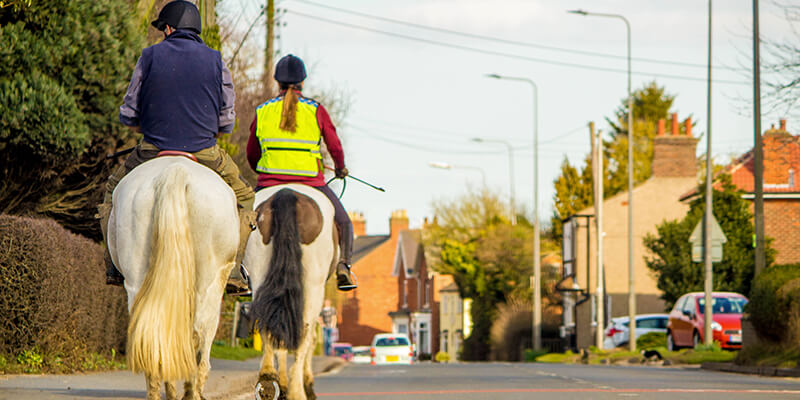A pegasus crossing, sometimes known as an equestrian crossing, is a push-button controlled crossing system which is usually found along bridleways and can be used by both pedestrians and riders mounted on horses. There are normally two sets of control panels; one for pedestrians (as on a puffin crossing) and one mounted two metres off the ground for mounted riders to press. These crossings may also feature fenced enclosures to keep the horses at a safe distance from the road before crossing. The pictograms feature red and green horses and riders as well as the standard green and red person. These are usually located on public bridleways.

How should pedestrians and equestrians approach a pegasus crossing?
Horse riders do not have to dismount in order to cross at a pegasus crossing. After they have pushed the button, they should remain a safe distance from the road before crossing. If there is an enclosure, the horse and rider should wait there until the person/rider light signal turns green and it is safe to cross. It is important to keep to one side of the road when crossing and to be aware of fellow road users, whether they are walking or riding.
How should drivers approach a pegasus crossing?
Drivers should follow the rules of the road and stop when a red light shows and proceed when it is green. It is important for drivers to avoid driving aggressively, revving their engines or sounding horns unnecessarily where large animals could be startled.
A pegasus crossing may be based on either a pelican or puffin control and drivers should follow the traffic light signals as usual, proceeding when the light is green and the road is clear. They must stop if the light is red and proceed with caution if the light is flashing amber and the road is clear.

